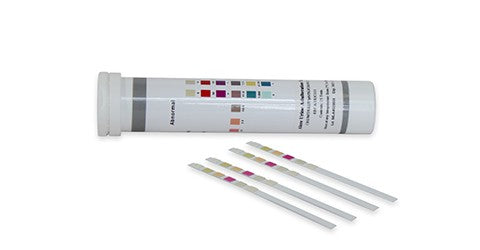7-Parameter Adulteration Strip - Vial of 25
Save 17%
Original price
$12.00
Current price
$9.99
SKU DUC-111 (Vial of 25)
One of the best ways to test for adulteration or dilution is to determine certain urinary characteristics such as pH and specific gravity and to detect the presence of oxidants/PCC, specific gravity, pH, nitrite, glutaraldehyde and creatinine in urine.
Some of our urine cups are equipped with integrated temperature and adulteration strips; however, you can also buy these separately for use with any of our urine tests.


